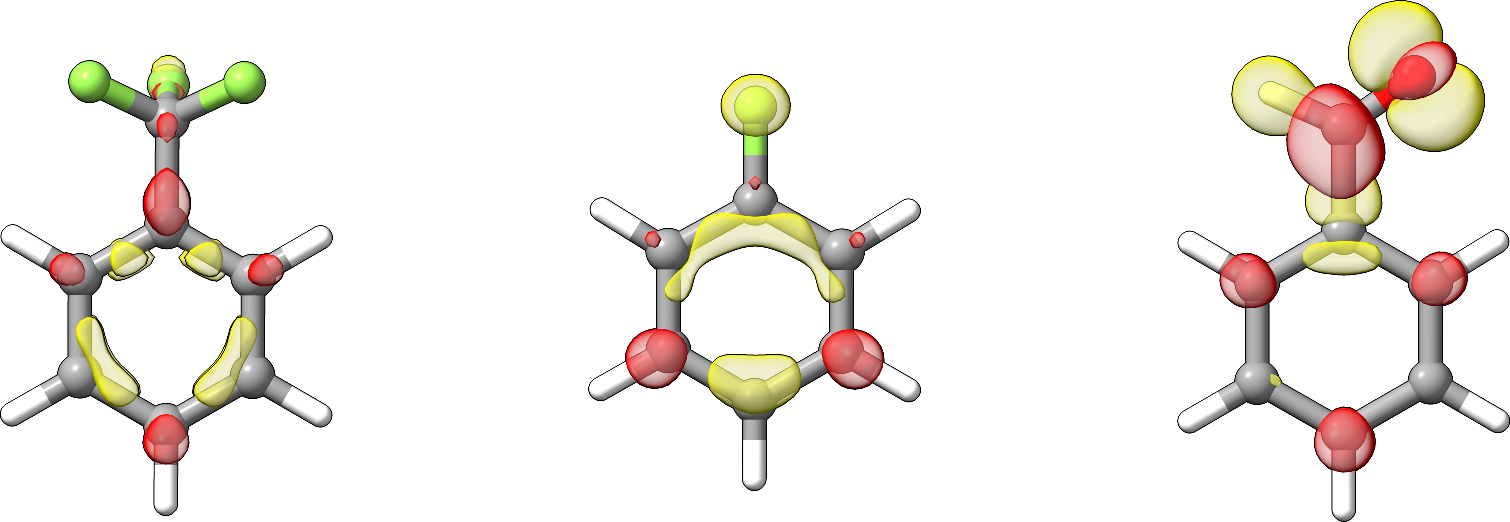Orbital Tool
The Orbital Tool will show molecular orbitals from files where the data is parsed. This includes FCHK files, NBO output files, and ORCA output files with
! PrintBasis
%scf
print[p_mos] 1
end
The electron density can also be calculated (assumes the molecule is in the ground state). Densities cannot currently be calculated for NBO files as the number of electrons is not parsed from the files.
Orbital-weighted Fukui donor, acceptor, and dual functions1 can be visualized as well, with the same stipulations as electron density. The Fukui functions highlight regions where the electron density likely changes the most when an electron is either added (acceptor) or removed (donor). This can indicate which sites are more nucleophilic or electrophilic. The Fukui dual function shows both nucleophilic and electrophilic regions at the same time. The functions SEQCROW (and AaronTools) uses only use information from the parent molecule (no added or removed electrons), so the functions only approximately describe how the electron density changes. However, the method of weighting orbitals seems to produce good results.

The above image shows the orbital-weighted Fukui dual functions of several substituted aromatic molecules. From left to right: trifluoromethylbenzene, fluorobenzene, and benzaldehyde. Negative function values (Fukui donor > Fukui acceptor) are yellow, and positive values (donor < acceptor) are red.